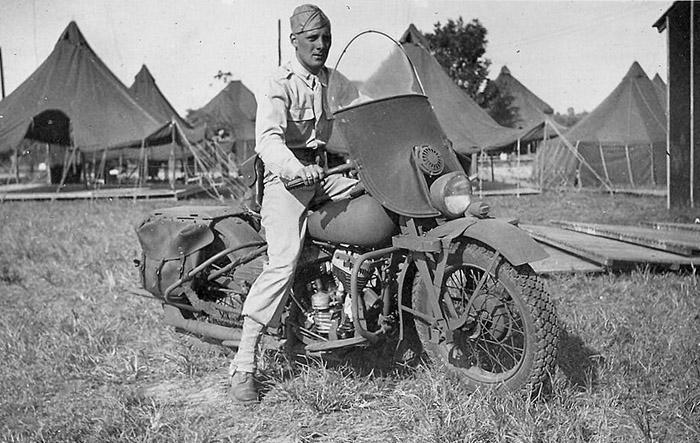Harley-Davidson WLA (1940)
 USA. WLA: 100,000+ built 1940-52
USA. WLA: 100,000+ built 1940-52
First motorcycle here on truck-enclycopedia, yes it's seems a bit off-topic but actually the website is about ALL military softskin vehicles, so its also comprised, as announced from the start also tractors, staff cars, down to ultra-light tricycle, and of course motorcycle and side-cars that also part of the military in several wars. So here you go, for a start on motorcycles, what else that a most legendary brand of all (With perhaps Triumph on the other part of the pond and Kawasaki further away)... The Harley Davidson history with the US Military dates back all the way to 1916 and the expedition to find Pancho Villa, up to 1998 and the Military Police's MT series. In this serie, the first obvious model of note is the WW2 Harkey-Davidson WLA "Liberator" with 100,000 produced from 1940 to 1952, used in WW2 on all fronts, Korea and Vietnam.
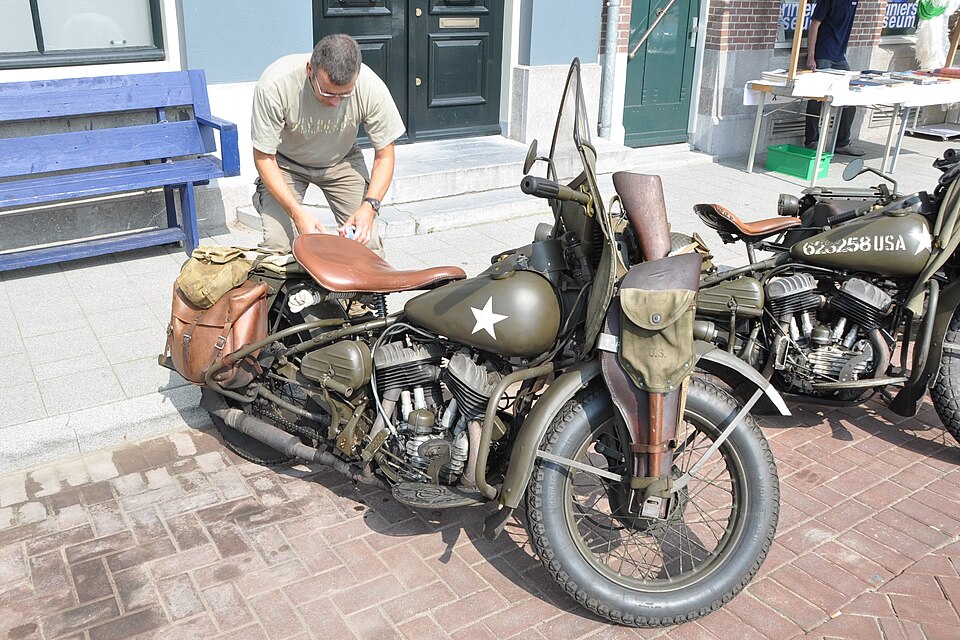
A Brand, A Legacy
No need to present today Harley-Davidson to any motorcycle enthusiast, the brand just oozes legend and immediately spawn images and a whole culture to mind, besite the purely technical aspects that cemented the brand's cult over the years. Harley-Davidson provided the US Military for almost ten decades, from 1916 to 1998 when production of the last military model ceased for good.
In 1903 Harley-Davidson was founded in Milwaukee, Wisconsin, by William S. Harley and the Davidson brothers (Arthur, Walter, and William A.). They built their first motor-bicycle in a small shed, aiming to create a machine that could be more than a pedal bicycle with an engine.
In 1907: The company was officially incorporated. By 1914, Harley-Davidson was supplying motorcycles for the U.S. military and had become one of the largest motorcycle manufacturers in the world.
In 1920: Harley-Davidson became the largest motorcycle manufacturer in the world, with dealers in 67 countries. It developed innovations such as the V-twin engine and teardrop fuel tank.

In World War I and II, the company played a crucial role by producing motorcycles for the U.S. military. Over 90,000 bikes were built for the military during WWII alone. The WLA model became famous as a wartime workhorse.
Post-War Boom and Cultural Icon (1950s–1960s): Motorcycles became part of American pop culture, helped by movies like The Wild One (1953) and fuelled by the attachment of veterans for their wartime motorcycles, that were ceded to them in some cases, purchased on military stockes for others. Harley-Davidson was associated with rebellion and freedom. However it faced increasing competition from Japanese manufacturers like Honda and Yamaha in the 1960s and especially 1970s.
AMF Era and Decline (1969–1981): In 1969 Harley-Davidson merged with American Machine and Foundry (AMF), a sporting goods manufacturer. Quality and reliability issues plagued the brand under AMF's management.Sales and reputation declined due to competition and manufacturing problems.
Rebirth and Modernization (1981–1990s): 1981: A group of 13 investors, including executives Vaughn Beals and Willie G. Davidson (grandson of co-founder), bought Harley-Davidson back from AMF.
Reinvested in quality, introduced the Evolution engine in 1984. Leveraged American pride, strong branding, and a loyal customer base to rebuild the company. Went public in 1986.
Recent History: Expanded product lines and entered the international market. Launched the V-Rod line (liquid-cooled engines) in collaboration with Porsche. Faced challenges with aging demographics and changing tastes. 2019: Released LiveWire, its first electric motorcycle. Continues to evolve with new technologies and a focus on global markets and younger riders. However its history with the US military ended with the end of the cold war and its gradual loss of reputation after 1969.
In Military Service
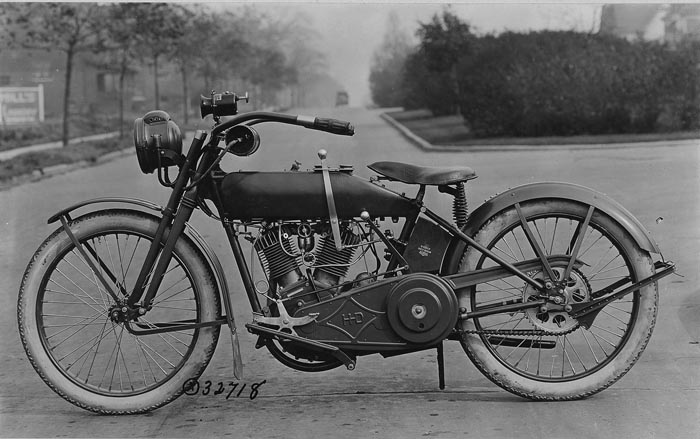
Harley-Davidson started early its history with the U.S. military. The first motorcycles were purchased by the cavalry corps to take part in the expedition against Pancho Villa Expedition, but only at first to carry dispatches and supplying troops. There was still not proper dedicated company of motorcycles. Military Debut in 1916 saw many skirmishes along the U.S.-Mexico border in pursuit of the revolutionary leader by General "Black Jack" Pershing which dispatched motorcycles equipped with machine guns mounted on sidecars, forming patrols of three.
Recognizing the motorcycle strategic advantages, the War Department ordered a dozen Harley-Davidson motorcycles, which proved invaluable of rough terrain. World War I, strong of this experience, Harley-Davidson was pressed to supply more motorcycles for battlefield use as a fast, agile communication but also transportation and reconnaissance asset on the rear lines, but also sometimes on the no-man's land where where traditional vehicles struggled.
By November 1918, the first American to enter Germany after the armistice was on a Harley-Davidson. By the end of Great War about half of Harleys from the factory in early 1917 went to the U.S. military a grand total of 20,000 motorcycles which was followed by more orders and a production ramp-up which proved pivotal, establishing the company as a pilla rof the US industrial force. Later, to support the need for mechanics, Harley-Davidson established a Quartermasters School in Milwaukee, both for maintanance and repair of motorcycles and this became ultimately the "Harley-Davidson University".
In the interwar, Harley-Davidson ramped up innovations, first developed for military used and now available to its civilian models. This era forged a reputation for toughness and reliability. Meawnhile the US cavalry Corps made more attempts to create indepdenent reconnaissance units only based on motorcyles, and soon, Harleys became a staple of organic vanguard reconnaissance at every echelon of the US military, thanks to their speed. Though demand for military motorcycles plumitted, Harley-Davidson continued to provide motorcycles for the police and military purposes (Like military Police) in the 1920s and 1930s.
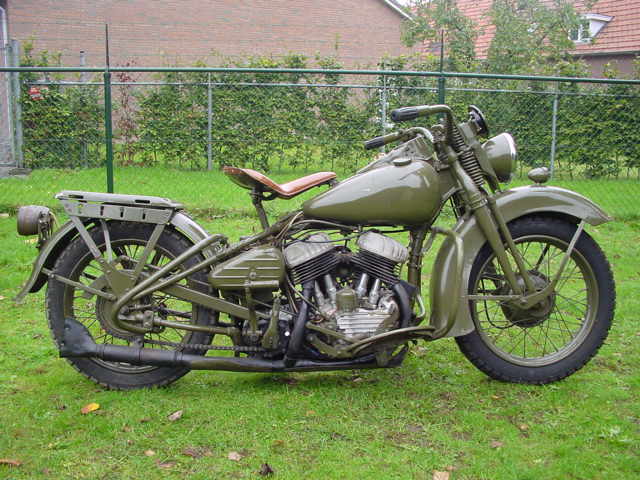
In World War II Harley-Davidson was called to produce a grand total of produced over 90,000 WLA motorcycles, used by the US Army, Navy and even Air Force and every sub-branches. The WA was soon immortalized as the “Liberator,” as WLAs using heavy-duty parts, larger fenders, and specialized cargo racks were seen often first entering nwewly-libertated cities in NW Europe in 1944. Harley-Davidson also provided a third of the WLAs to the Russian army via lend-lease and a lot to the Canadian military.
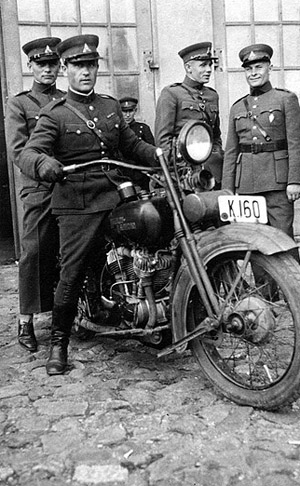
Outside the WLA, Harley-Davidson also produced the more specialized WLC, XA, UA, and Servi-Cars for military use. The WLC was a modified Canadian forces moto, the XA was designed for the North African Campaign (Torch and afetermath) and designed for desert warfare, with a shaft-driven engine to prevent sand damage. The UA as the "Servi-Cars" were a few modular models offerng multiple options for various tasks. For its immense contribution to the war effort in World War II the company was awarded in 1945 the prestigious Army-Navy "E" Award for excellence in wartime production, for superior craftsmanship and efficiency.
In 1942-45 Harley-Davidson also took part of the production of bomb casings and casing lugs for munitions production. After World War II, continued to be ordered military motorcycles, and developed the XLA, a military version of the Sportster, while maintained production of the WLA until 1952. Both models saw action in Korea. The XLA in addition to Korea, saw action aplenty in Vietnam. Harleys were still used during the Persian Gulf War, notably with the MT-350 and MT-500, last Last Military Motorcycles Produced with Rotax. Production ended in 1998. But even after the end of the MT series, Harley-Davidson remained celebrated by veterans and motorcycle enthusiasts with its network of veteran-Owned Harley-Davidson Dealerships supporting the Military Community post war.
 Rotax MT-350
Rotax MT-350
 Rotax MT-500
Rotax MT-500
Harley-Davidson WLA (1940)
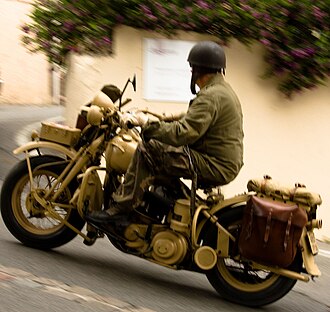
The Harley-Davidson WLA, affectionately known as the "Liberator," is a military motorcycle produced by Harley-Davidson to U.S. Army specifications during World War II. Based on the civilian WL model, the WLA was designed for ruggedness and reliability in various combat environments. It was given an engine rated for 45.12 cu in (739.4 cc) side-valve, 45-degree V-twin which developed approximately 23–25 hp at 4,500 rpm.
Its transmission was a 3-speed hand shift and it used a tubular steel double cradle with Springer fork for the front suspensions, and drum brakes front and rear. The WLA mounted two rugged 4.00 x 18 tires enabling some easy deflation in order to operate on the roughest terrains. Its wheelbase was 57.5 in (1,460 mm) doe an overall lenght of 88 in (2,200 mm) and an overall Widt of 41 in (1 m) with haversacks and rear racks. In dry Weight it remained at 540 lb (245 kg) with a total fuel capacity of 3.375 US gallons (12.8 liters) and a fuel Consumption of approximately 35 mpg (6.7 L/100 km).
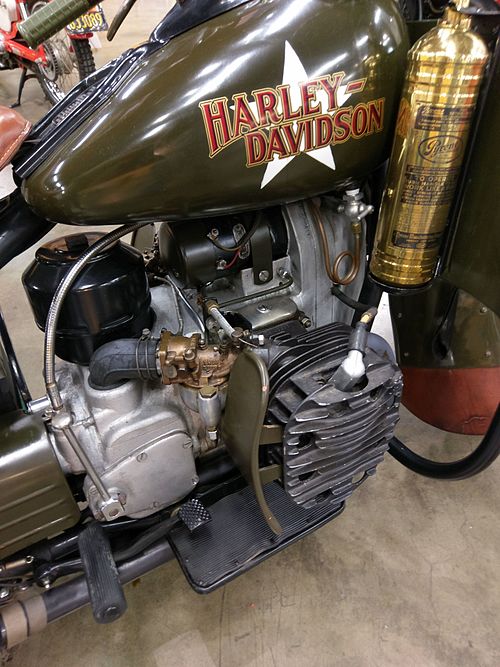
Production of the WLA started in 1940, continuing through 1945 and resuming from 1949 to 1952. In wartime over 70,000 WLA and WLC (Canadian one) were produced and 27,000 supplied to the Soviet Union under the Lend-Lease. The WLA was primarily used for courier duties, military police work, and reconnaissance missions. It was engineered to withstand harsh conditions and required minimal maintenance. It could ford streams up to 16 inches deep, carry up to 40 lbs of equipment, and operate reliably on low-octane fuel. Standard military features included blackout lights, a skid plate, leather saddlebags, a luggage rack, and a large oil bath air cleaner. Beyond the U.S. Army, it was also used for specific roles by the Navy and Air Force as well, and its widespread use and reliability earned it the nickname "Liberator" among European populations during the war.
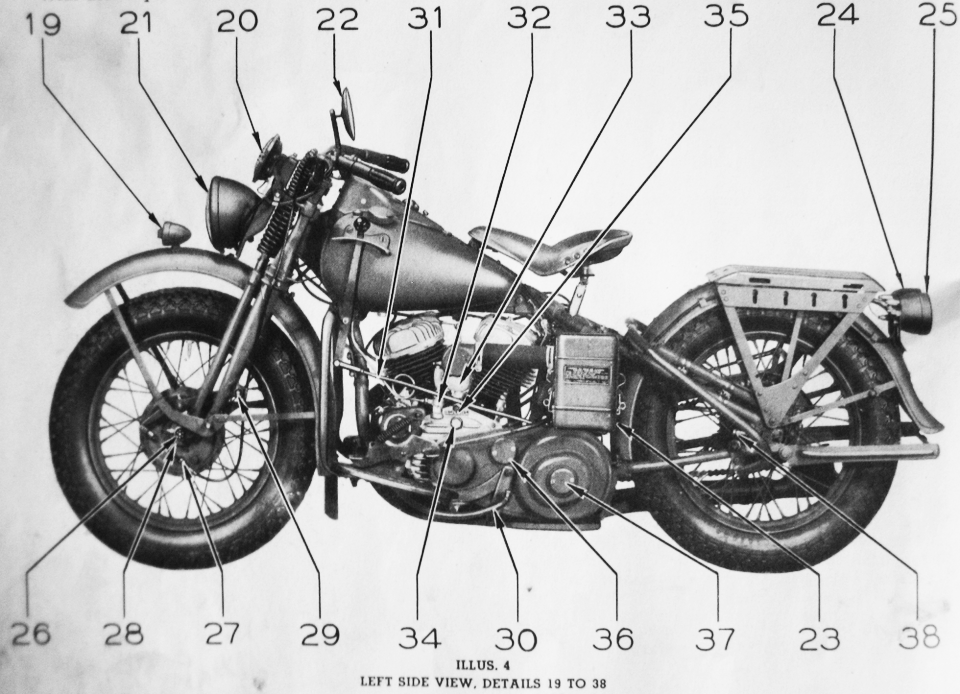
Harley Davidson WLA specs. |
| Dimensions (Length) | 88 in (2,200 mm) |
| Wheelbase | 57.5 in (1,460 mm) |
| Curb weight | 540 lb (240 kg) dry |
| Engine | 45.12 cu in (739.4 cc) SV Air-cooled, side-valve, 45-degree V-twin |
| Bore/stroke | 2.75 in × 3.8125 in (69.85 mm × 96.84 mm) |
| Power | 25 hp (19 kW) @ 4,500 rpm, Comp. 5:1 |
| Ignition type | 6 V battery and coil with circuit breaker (timer) |
| Transmission | 3-speed hand shift |
| Frames | Tubular steel double cradle |
| Suspensions | Front: springer fork |
| Brakes | Drums front and rear |
| Tires | 4.00 x 18 |
| Top speed | 65mph+ (105 kph) |
| Max range | 3.375 US gal (12.8 L) c200km |
